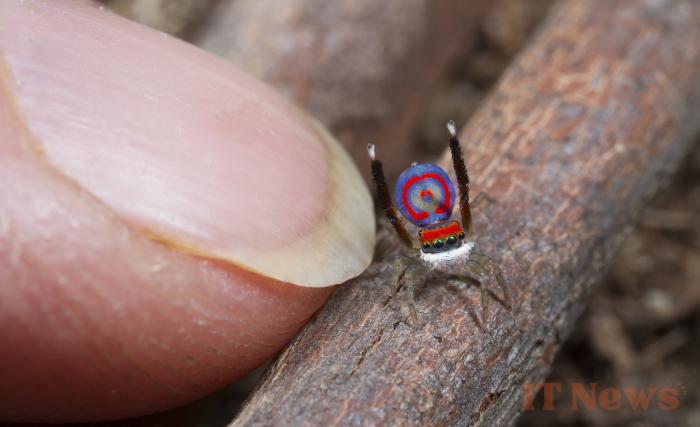Scientists have discovered how an Australian jumping spider's semi-hydraulic system allows it to quickly jump long distances with precision while experiencing G-forces greater than those of jet fighter pilots. A discovery that could revolutionize robotics research.
Maratus splendens, the spider with fascinating secrets
Many fear them, yet spiders are our friends (well, according to the spiders...). Especially since today's spider comes to us from Australia, it's difficult to place any trust in it. Despite everything, the latter is capable of real feats, unique abilities that could well help our robotics research move forward. The spider of the day, the splendid peacock spider (Maratus splendens), is far from the traditional spiders that populate our lands.
And for good reason, it is capable of jumping. Jumping spiders propel themselves thanks to a particular combination of hydraulic pressure and muscular action. And even if the idea of a jumping spider is terrifying, the biomechanics behind it have not finished fascinating scientists. Studies conducted by Macquarie University in Sydney have examined in detail the jumping ability of the Australian splendid peacock spider to better understand the semi-hydraulic biomechanics behind it.
"These spiders are so small that you could fit four or five of them on your thumbnail," explains Ajay Narendra, associate professor in the university's School of Natural Sciences and lead and corresponding author of the study. "Males weigh just two milligrams – one of the lightest known jumping spiders – while females are six times heavier."
Spiders' jumps are not powered by muscles or springs. Although they have muscles that bend in their legs, they lack the muscles needed for leg extension and powerful jumping. To achieve jumping, they rely on a "semi-hydraulic locomotion system." Before jumping, the spider contracts the muscles in its cephalothorax (the spider's fused head and thorax) to push hemolymph, their version of blood, into its legs. The hemolymph then creates pressure in the legs, causing them to expand rapidly. And when the spider releases the pressure, the legs extend forward, propelling the spider into the air with great force.
After being filmed at 5000 frames per second using a high-speed camera, the spiders were released into their natural habitat. The researchers then manually analyzed the footage frame by frame, tracking different body structures and extracting coordinates from which they were able to reconstruct the jump trajectory. The images also revealed the contribution of the different legs to the jump, including the appearance of a third pair of legs in males.
Take-off accelerations greater than those of our fighter pilots
During this experiment, on average, the male and female spiders experienced the equivalent of 13.03 G and 12.5 G during takeoff. This is higher than all other known jumping spiders, and even the values encountered by our experienced fighter pilots, who can withstand up to 8 or 9 G. A typical human can withstand about 5 G before losing consciousness.
"For animals like us, whose bodies are more rigid, the ability to resist g-forces is much more limited than for spiders, whose soft, fluid-filled bodies manage this pressure much more efficiently," explains Narendra. "Their low body mass reduces the forces acting on their bodies. This also reduces stress on different parts of the body because the forces are distributed throughout the body."
The results obtained by the researchers could enable the development of robotics:
"Jumping spiders have an exceptional ability to control their jumps to reach specific targets, whether landing on surfaces or catching small, fast-moving insects," explains Narendra. "Robotics researchers will likely be inspired to build robots based on the semi-hydraulic systems of jumping spiders that have efficient, goal-directed movements.""
Tiny spiders that may well offer us major advances in robotics.






0 Comments